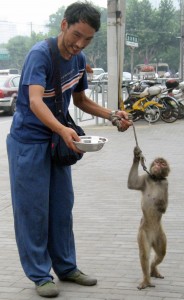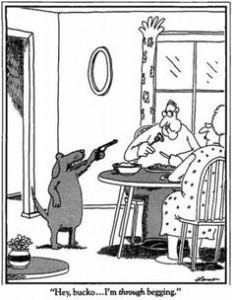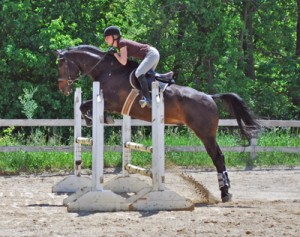Blog Post #2 Looking into an enslaved monkey’s eyes
 I chose an image from Wikipedia that is a good representation to the modern human-animal relationship. In the picture, a man and a monkey are on the street. The man with a bowl in his hand is begging for money. The really shocking thing about this image is that the man is also holding a rope that surrounds a monkey’s neck. Obviously, the man is leading the monkey. There is smile on the man’s face. The monkey appears to be suffering because he is clenching his fist around the rope. This picture represents a modernized slavery. The only difference is that this is human enslaving animal not human enslaving human.
I chose an image from Wikipedia that is a good representation to the modern human-animal relationship. In the picture, a man and a monkey are on the street. The man with a bowl in his hand is begging for money. The really shocking thing about this image is that the man is also holding a rope that surrounds a monkey’s neck. Obviously, the man is leading the monkey. There is smile on the man’s face. The monkey appears to be suffering because he is clenching his fist around the rope. This picture represents a modernized slavery. The only difference is that this is human enslaving animal not human enslaving human.
In Berger’s essay “Why look at animals?” John Berger discusses the enslavement of animals, he quoted Buffo in his work, “ To the same degree as man has raised himself above the state of nature, animals have fallen below it: conquered and turned into slaves”. In this image, the man is at a higher level than the animal. Perhaps the man is being mistreated in real life; he is living at the bottom of human society. However, he could easily vent his anger on the monkey. Mistreating the monkey makes the man feel satisfied that there is always something that underneath him. As Berger says, “They are creatures of their owner’s way of life, the pet completes him”. The monkey is a testimony to the dark side of humanity: how human is willing to scarify another species to fulfill their own satisfaction.
Also the reasons why the man in the picture wants to bring a monkey when begging are worth exploiting. Sadly, the street where the man is begging with the monkey is just a few miles away from my home and I have seen beggars with monkeys more the once in China. Normally, the man trained the monkey to do some tricks or maybe just made the money to make the same begging gesture. Some pedestrians might find the monkey “cute” or “funny” and give the man some money. To the man, the monkey’s value is purely instrumental. The monkey is just served as a tool to make money for the man. The intrinsic value of the monkey is being neglected completely. In Alice Walker’s essay “Am I blue?” she talked about how human has forgotten animal’s right completely, “there are those who never once have even considered animals’ rights: those who has been taught that animals actually want to be used and abused by us”. The reason why this kind of begging is alive not only comes from the man who abuses the animal, but also comes from the indifference to the mistreatment to the animal from the whole society. The whole society is marginalizing animal.
Sources for the post:
“Shanghai-monkey” by F3rn4nd0 – File: Shanghai man with monkey.jpg. Via Wikipedia – http://en.wikipedia.org/wiki/File:Shanghai-monkey.jpg#mediaviewer/File:Shanghai-monkey.jpg
John Berger. “About Looking”. Pantheon Books, 1980 print. Sept 10 2014
Walker, Alice. “Am I Blue.” Human Rights Anthology. Ed. Lee Peralta. New York: Columbia U. Press, 1995. 438-445. Sept 16 2014


Recent Comments